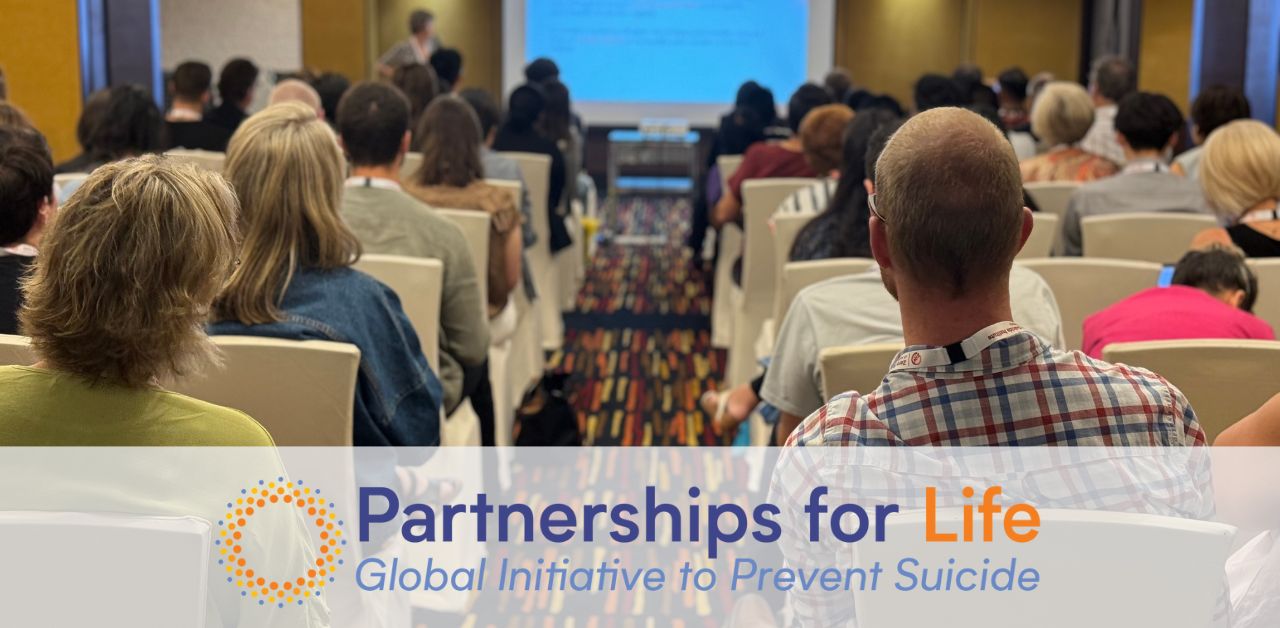In June 2024, at the International Association for Suicide Prevention’s 11th Asia Pacific Conference (APAC) in Bangkok, Partnerships for Life held a pre-conference workshop with three key objectives:
- To identify the barriers and facilitators to starting/developing suicide prevention activities/programmes.
- To understand some of the complexities, integration and cultural context specific to the region/sub-regions.
- To increase our knowledge on how to develop and implement national suicide prevention strategies, based on a public health prevention model.
The session was split into two parts, initially focused on research priorities and gaps as part of a wider policy discussion running through the APAC conference, followed by discussions on ways in which the Partnerships for Life programme could support the development of national suicide prevention strategies.
Delegates heard presentations from the Western Pacific, South East Asia and Eastern Mediterranean regional Partnerships for Life teams.
A range of issues were discussed including: consideration of the key gaps in research on suicide prevention in the Asia Pacific region; ways of measuring the effectiveness of suicide research; cultural and contextual considerations; and integrating peer learning and lived experience. The second part of the session also considered ways in which Partnerships for Life could support countries in the region including: providing information on early stages of planning the suicide prevention journey; identifying the barriers and facilitators in developing national suicide prevention strategies and programmes; and defining the challenges of delivery.
Key Points
Within the Asia Pacific region lack of reliable data is a key limitation on suicide prevention research and implementation in particular the lower- and middle-income countries. The forum noted that a global minimum data set for routinely collected data is urgently needed, and affirmed that positive developments have occurred in the production and implementation of surveillance systems. It was also noted that policymakers could work closer with researchers in defining the purpose of collecting specific data, thus focusing work on its ultimate potential policy impact.
Insufficient human and financial resources are devoted to this field of work. It is accepted that all government have their policy priorities and that often these will not sufficiently foreground suicide prevention. Many reported a lack of qualified or experienced staff working in mental health and other relevant spheres of work, and a subsequent lack of suicide literacy and confidence in providing support to people in crisis. Delegates from some countries reported that human resources are in place in the research field, but financial resource – in the form of governmental funding and research funding – is inadequate. Potential mitigating actions include task shifting/sharing, and the use of non-mental health professionals to contribute to some activities. There is a widespread concern that, even in countries with well-developed national strategies, sufficient implementation funding does not always follow and delegates identified that evaluating the effectiveness off national suicide prevention strategies is a priority.
Stigma combined with low levels of public awareness or literacy – remains a significant issue in the region. Suicide is still criminalised in many countries and in these countries and others, help-seeking is sometimes discouraged. Changes in many countries – including Pakistan, Malaysia, Singapore and others – to decriminalise are embraced. Stigma at a community level could be addressed by the recruitment of well-known ambassadors – religious leaders, educators, media, and well-known people – using approaches already seen in public health campaigns.
Research on risk factors and vulnerable groups remains a key gap in the region and delegates identified under research areas of due consideration including, economic and financial factors, climate change, migrant and seasonal workers, students, women and young girls, minorities, and individuals with diverse gender and sexual orientations. There is scope here to identify interventions which are context-specific.
On a similar theme, delegates also noted there is limited research on protective factors in the region, for instance, it was noted that whilst social, community and religious contact can be protective, more research is required. Peer support in schools and colleges is one example of potentially transformative protective inputs.
The delegates recognised an essential need to better include people with Lived Experience in both advocacy and research, from co-design through to the evaluation of findings.
Next steps
Small groups of researchers have been convened in both regions to prepare journal commentaries for the Western Pacific and South East Asia editions of Lancet Regional Health. These will focus on emerging research priorities and gaps.
More broadly, Partnerships for Life will continue its focus on supporting the development of national and sub-national research strategies. There was broad support for greater cross-national/inter-regional collaboration in research, particularly on research topics of shared interest. Building partnerships with NGOs and other international bodies, it was felt, could strengthen the efforts of the IASP community.




